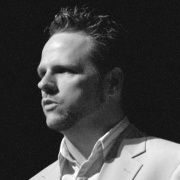Big question: how do you deal with deadline stress?
For anyone juggling projects, and freelancers in particular, handling deadlines is an ever-present challenge. But how do you stop it becoming a nightmare? We asked our panel of experts

Rachel Shillcock
Freelance web designer
www.rachil.li
Lists! I’m a person who feels happiest when I have a list of tasks to complete. What works best for me is to keep communication strong with a client from the beginning – this way they know what to expect, when to expect it and that you’re good at letting them know when things will be done.
To have that trust between you and a client is so important, and being good at communicating with them will go a long way to building it further. But, going back to lists, once I know the scope of a project I’ll start making them – starting with rough lists of what the main project aims are, and moving on to form ones that include specific tasks for each of those elements. I use Things: it makes it a lot easier to do this per project, and I can add notes and set deadlines for each of the tasks. When I’m getting closer to deadlines, I can clearly see what tasks are left that need completing and can help communicate this back to my client.
Rachel is a freelance web designer

Whitney Hess
UX designer
whitneyhess.com
I crave deadlines and stress: no one wanting anything from you is a much worse place to be.
Whitney is an independent user experience designer

Rob Mills
Studio manager
bluegg.co.uk
Organisation: as a studio manager and freelance copywriter, I have to manage a lot of workflow and deadlines. Being able to schedule projects means I know what I or the team are working on. Things will get added to to-do lists as urgent, but saying “no” or “not yet” is fine too. Clients appreciate honesty – by being organised you can manage their expectations. As soon as you realise you may not hit deadline, tell them.
There will aways be stressful times, so another key aspect is to step away from the desk and have downtime. A work/life balance will make you more productive in work mode.
Rob is studio manager of creative agency Bluegg

Anna Dahlstrm
Freelance UX designer
annadahlstrom.com
The key with deadlines is prioritising and being clear on what needs doing. It’s easy to jump straight in, but spending time up front planning what you need to do and why often results in more focused, better quality work.
Doing a few things well can be better than trying to do everything, which leads on to being realistic. Occasional stressful deadlines are fine, but if it’s a recurring theme, you and your team should look at what you’re committing to and if there’s a better way to approach it. There’s also the communication within the team: clear responsibilities and having regular catch-ups, capturing and addressing risks as early as possible.
Anna is a freelance user experience designer

Jonathan Smiley
Designer
www.zurb.com
The best way to avoid deadline stress is a mix of transparency and planning.
Giving clients a five-day outlook every week helps set expectations, saving you sweating over whether they’re worried or wondering. Agree clear milestones in advance and, barring unexpected complications, things tend to go well.
Jonathan is a design lead at ZURB

Mike Mackay
Web developer
www.mikemackay.co.uk
It’s in the planning: if the project is clear, you’ll get through it with less stress. You have enough to worry about without adding confusion (or lack of understanding) to the mix.
Mike is a web developer

Huw David
Designer
www.huwdavid.net
It’s very easy to get sucked into a work-late culture, which can lead to burnout. If you’re tired, you tend to be more anxious and less productive, which only adds to stress. Get away from the desk, enjoy life, rest and take time to think.
I’ve also found exercise really helps: obviously with keeping you fit, but it’s also a good release if you’ve built up any tension. The final tip is to communicate. If concerns and potential problems are addressed clearly in advance, it eases pressure when a deadline is looming.
Huw is founder of Huw David Design
Get the Creative Bloq Newsletter
Daily design news, reviews, how-tos and more, as picked by the editors.

Omar Martinez
Lead technologist
Agencynet.com
I make the crunch-time work easy to consume. I try to break down every big task that’s left into smaller tasks.
After I’ve determined the smaller tasks, I use the Pomodoro technique. While I work on one task, I try to not think of the others, thus helping reduce stress.
Omar is the lead technologist at AgencyTEN

Leisa Reichelt
UX consultant
disambiguity.com
My two tricks for reducing work stress are simple to say and harder to do.
First: do fewer things by learning to say ‘no’ more. Only commit to things you really need/want to do. Second: get started. Most projects start slow and have massive crunches at the end. The sooner you start, the better job you’ll be able to do because you’ll have more time to iterate and refine.
Leisa is an independent UX consultant

Rob Walker
Managing director
xcitedigital.com
Break tasks into manageable chunks, work backwards from deadlines and give yourself breathing space. Do a self-review after any deadline mishap. Learning from mistakes and managing your time more effectively can help mitigate ‘deadline stress’ in the future.
When you’re under pressure, walk away for five minutes and clear your mind. Rationalise your stress. By calming yourself down you’ll find yourself immediately more productive and focused. After all that, play some sport or go for a run: exercise is the best stress reliever there is.
Rob is managing director at Xcite Digital

Andy Budd
Managing director
www.clearleft.com
Don’t agree to unrealistic deadlines; try to find understanding clients willing to shoulder some of the responsibility for the project. One way to do this is to work on a fixed-time, flexible scope basis and keep your clients informed.
If things are slipping, discuss it early. And understand why the deadline exists: many are ‘soft’, and can be moved with a bit of negotiation. So know what you’re getting into before agreeing to a project.
Andy is managing director of Clearleft

Derek Featherstone
Accessibility expert
www.simplyaccessible.com
You MUST have people on your team grounded in reality – business owners, freelancers and the like have grand visions of what we’ll accomplish in a year, month, day, hour. Someone that helps you take the foot off the accelerator a bit, so you aren’t trying to jam in unrealistic amounts of work. Also, spend less time on Twitter and YouTube!
Derek is an instructor, speaker and developer
Learn how to be a creative director! Insider advice, over at Creative Bloq.

Thank you for reading 5 articles this month* Join now for unlimited access
Enjoy your first month for just £1 / $1 / €1
*Read 5 free articles per month without a subscription

Join now for unlimited access
Try first month for just £1 / $1 / €1
The Creative Bloq team is made up of a group of design fans, and has changed and evolved since Creative Bloq began back in 2012. The current website team consists of eight full-time members of staff: Editor Georgia Coggan, Deputy Editor Rosie Hilder, Ecommerce Editor Beren Neale, Senior News Editor Daniel Piper, Editor, Digital Art and 3D Ian Dean, Tech Reviews Editor Erlingur Einarsson and Ecommerce Writer Beth Nicholls and Staff Writer Natalie Fear, as well as a roster of freelancers from around the world. The 3D World and ImagineFX magazine teams also pitch in, ensuring that content from 3D World and ImagineFX is represented on Creative Bloq.




